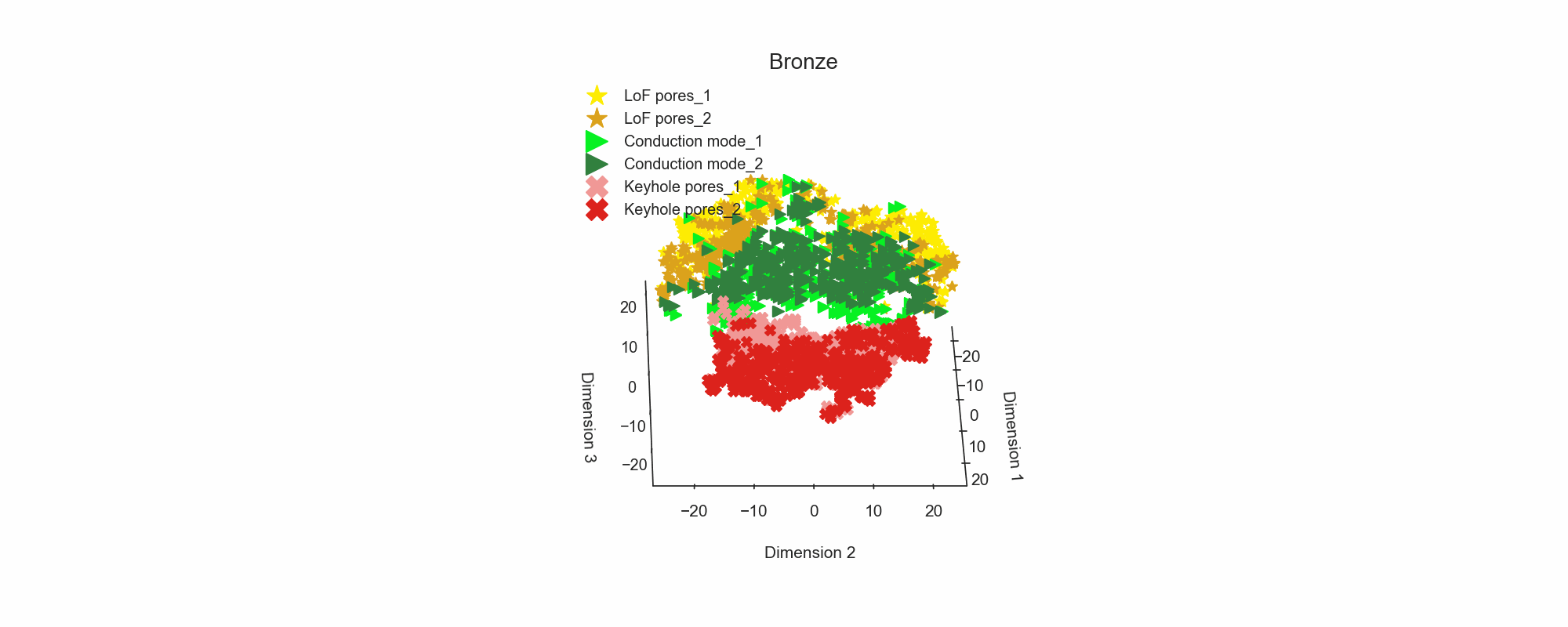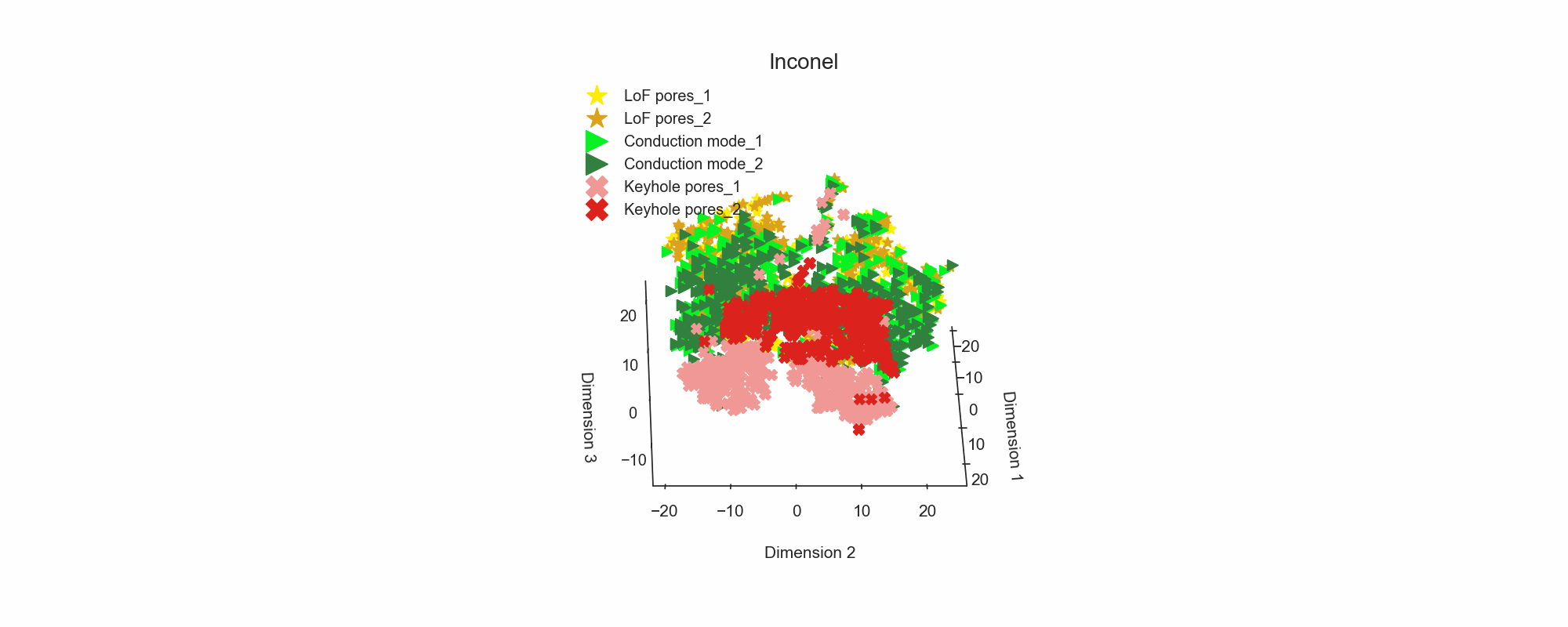Scientific publication
Differentiation of materials and laser powder bed fusion processing regimes from airborne acoustic emission combined with machine learning
Vigneashwara Pandiyan and Rita Drissi-Daoudi share first authorship.
Outline
This study investigates the use of a low cost microphone combined with state-of-the-art machine learning algorithms as online process monitoring able to differentiate various materials and process conditions of Laser-Powder Bed Fusion (LPBF). Three processing regimes (lack of fusion pores, conduction mode and keyhole pores) and three alloys (316L stainless steel, bronze (CuSn8), and Inconel 718) were selected. It was found, by analysing the acoustic signatures resolved in the time, frequency, and time-frequency domains, that the regimes are statistically distinct, which was also confirmed by the t-distributed stochastic neighbour embedding (t-SNE) visualisation. Three conventional machine learning algorithms and a Convolutional Neural Network (CNN) were chosen to perform the classification tasks resulting in five main findings. First, for the first time, it was proven that the AE features are related to the laser-material interaction and not from undesired machine or environmental noise. Second, it was found that the process regimes are classified with high accuracy (> 87%) regardless of the algorithms and materials. Third, it was demonstrated that it is possible to build a single model from the three materials and still reach high classification accuracy (>86%) of the different regimes. Forth, we proved that the AE features used for the classifications are material and regime dependent. Hence, it seems not possible to have a universal or generalised model for most metals. Finally, with LPBF processing of multi-materials on the rise, a strategy for classifying the material and the process regimes simultaneously using a CNN multi-label architecture reached a very high classification accuracy (≈ 93%). The results demonstrate the potential of our approaches for online LPBF process monitoring of different materials and regimes.
Reference
R. Drissi-Daoudi, V. Pandiyan, R. Logé, S.A. Shevchik, G. Masinelli, H. Ghasemi-Tabasi, A. Parrilli, and K. Wasmer, Differentiation of materials and laser powder bed fusion processing regimes from airborne acoustic emission combined with machine learning, Virtual Phys Prototyp, Vol. 17, Issue 2, pp: 181 - 204, 2022, doi: https://doi.org/10.1080/17452759.2022.2028380.
Supplementary data
Movies: Click on the picture to enlarge.
Low-dimension feature space representation using t-SNE with perplexity =10 for three different regimes in the LPBF processing of stainless steel, bronze, and Inconel. Subscripts 1 and 2 indicate the number of process parameters considered to define a regime.



